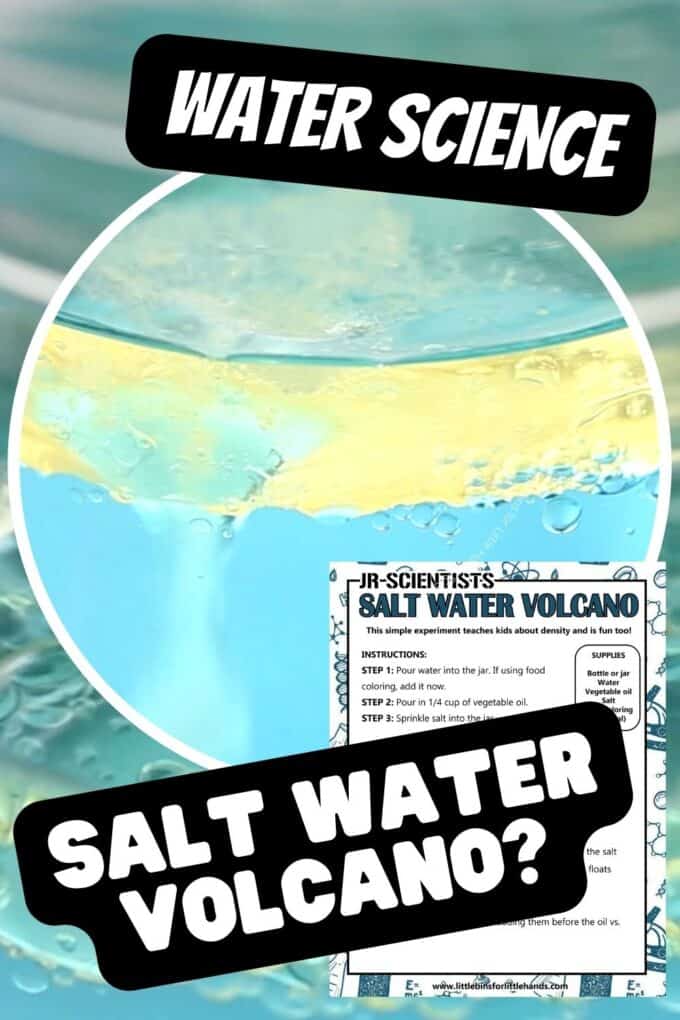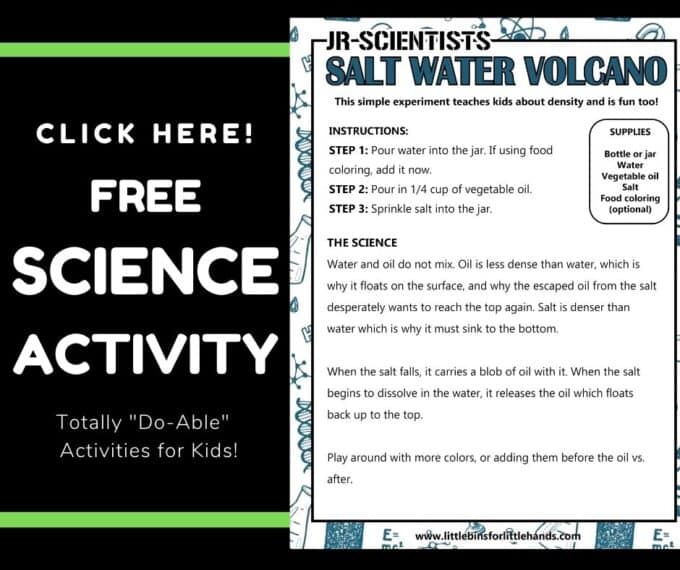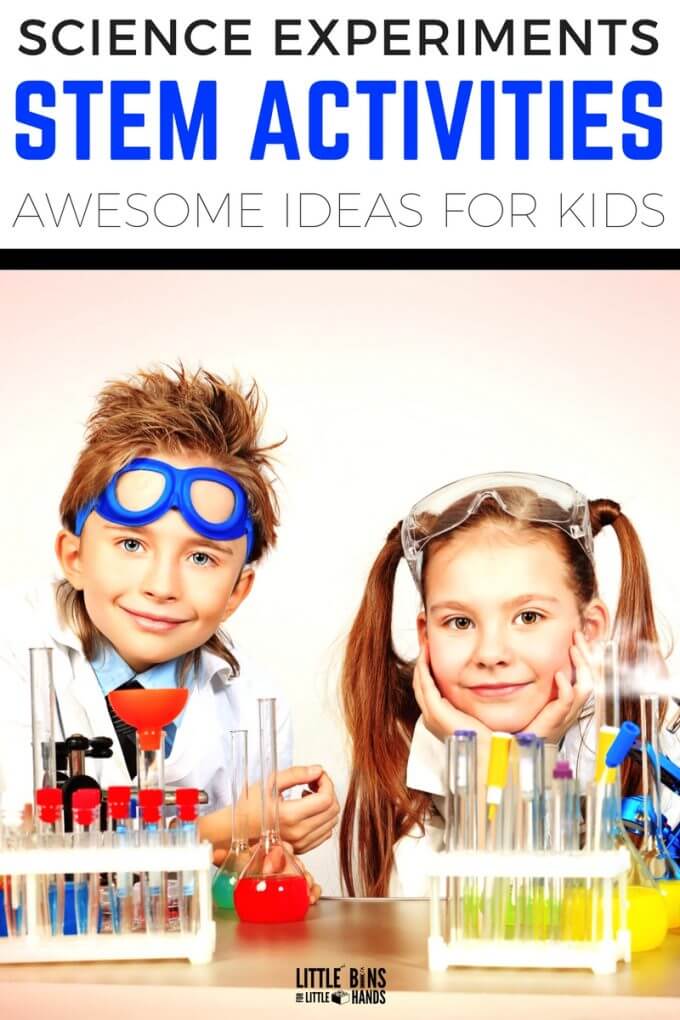We enjoyed making a homemade lava lamp with alka seltzer, now try a fun lava lamp experiment with salt. Simple science experiments at home or in the classroom are easy to set up and perfect for young kids to play and learn with science. Explore what happens when you add salt to oil and water. There are tons of ways to have fun with science all year round!
HOMEMADE LAVA LAMP WITH SALT FOR KIDS

SCIENCE EXPERIMENTS FOR KIDS
Science learning starts early, and you can be a part of that with setting up science at home with everyday materials. Or you can bring easy science experiments to a group of kids in the classroom!
We find a ton of value in cheap science activities and experiments. All our science experiments use inexpensive, everyday materials you can find at home or source from your local dollar store.
We even have a whole list of science experiments, using basic supplies you will have in your kitchen.
You can set up your science experiments as an activity focusing on exploration and discovery. Make sure to ask kids questions at each step, discuss what is happening and talk about the science behind it.
Alternatively, you can introduce the scientific method, get kids to record their observations, and make conclusions. Read more about the scientific method for kids to help you get started.
CLICK HERE TO GET YOUR FREE PRINTABLE SALT VOLCANO PROJECT!
LAVA LAMP EXPERIMENT WITH SALT
Can you use salt instead of Alka Seltzer in a lava lamp? You betcha!
SUPPLIES:
- Bottle or jar
- Water
- Vegetable oil
- Salt
- Food coloring (optional)
INSTRUCTIONS:
STEP 1: Pour water into the jar.

If using food coloring, add a few drops to the water now.

STEP 2: Pour in 1/4 cup of vegetable oil. What do you notice?

STEP 3: Sprinkle a spoonful of salt into the jar.


WHY DOES OIL, WATER AND SALT MAKE A REACTION LIKE A LAVA LAMP?
There are quite a few things going on here with both physics and chemistry! First, remember liquid is one of three states of matter. It flows, it pours, and it takes the shape of the container you put it in.
However, liquids have different viscosity or thicknesses. Does the oil pour differently than the water? What do you notice about the food coloring drops you added to the oil/water? Think about the viscosity of other liquids you use.
Did you notice the oil and water separated and did not mix? That’s because oil is less dense than water. Density is a measure of how compact the mass in a substance or object is.
Liquids are made up of different numbers of atoms and molecules. In some liquids, these atoms and molecules are packed together more tightly resulting in a denser or heavier liquid.
Making a rainbow density tower is another great way to observe how not all liquids have the same density.
What happens when you add salt to the oil and water? Salt is more dense than water which is why it sinks to the bottom.
When the grains of salt fall, they carry a blob of oil with it. The salt then begins to dissolve in the water, which releases the oil which floats back up to the top creating the lava lamp effect.
MORE FUN EXPERIMENTS TO TRY
Make a floating drawing with our dry erase marker experiment.
Blow up a balloon with just soda and salt in this soda balloon experiment.
Make dancing corn or dancing raisins!
Will an egg float or sink in salt water? Try this salt water density experiment to find out.
This simple water density experiment with sugar is an amazing science experiment for kids!
Make a density tower with layers of different liquids.
Will it freeze? What happens to the freezing point of water when you add salt.
OIL AND WATER EXPERIMENT FOR KIDS
Click on the image below or on the link for more easy science experiments for kids.










